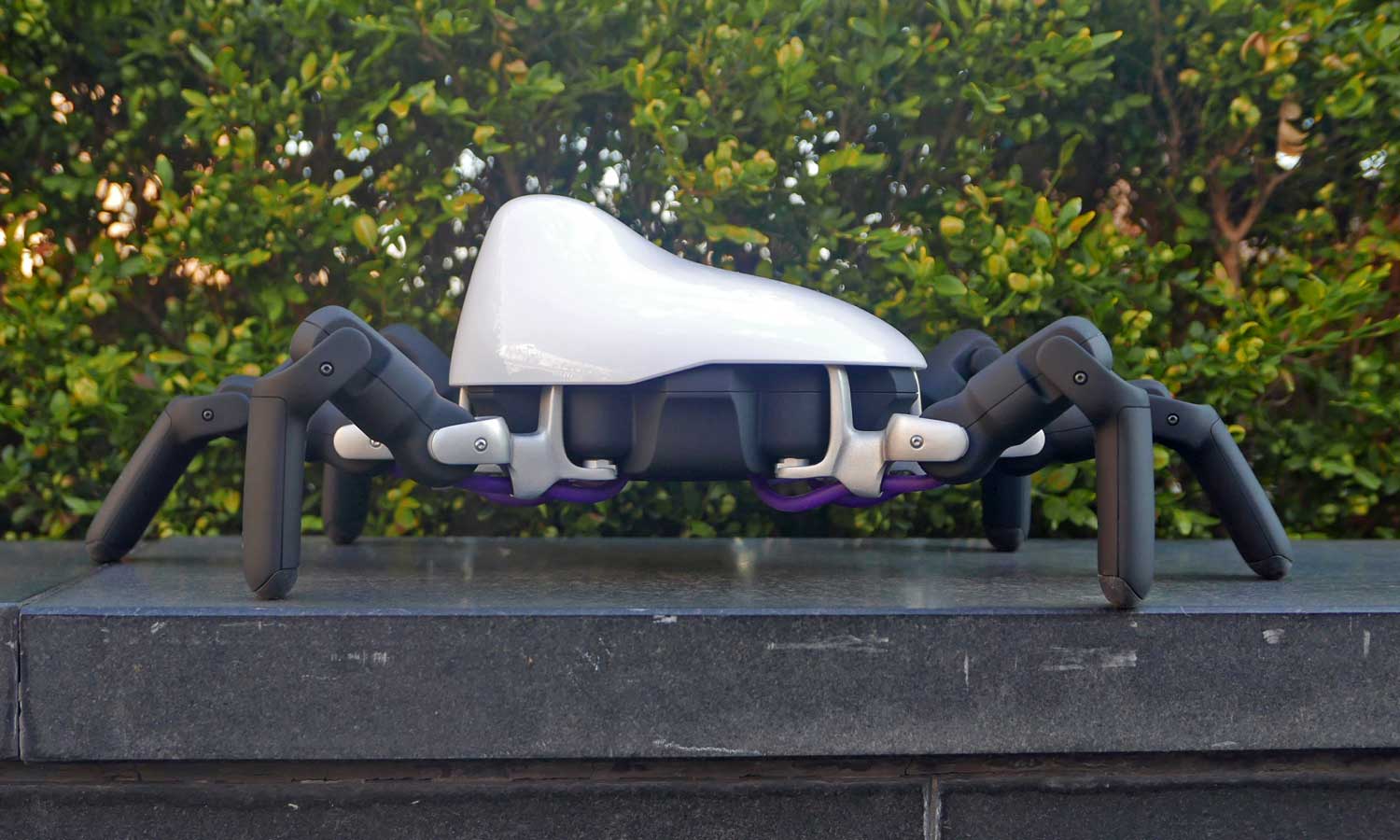This $1,000 Insect Robot Creeped My Whole Office Out
The Vincross Hexa looks like an insect from the future, but a lack of actual stuff to do with it if you're not a programmer makes it a tough sell for $1,000.
The Vincross Hexa looks like an insect from the future. And when you see it crawling around, you might think it's the most badass remote-control toy you've ever seen. But it's far from a children's plaything. This $949 hexapod is more for hobbyists with a lot of money to spend, or those who like to tinker and program.

The Hexa looks like it stepped off of the Death Star, with black, rubberized legs and a white helmet surrounding a series of lenses. My co-workers reacted to it with a mix of horror ("It's a bug!") and amusement.
Each of the six legs has three degrees of freedom, for a total of 18 motors. It moves like a bug, and I appreciated how it could adjust over terrain and climb over small boxes and other items. It can climb, but it's small. While it can pull itself onto a box, anything too tall will cause the Hexa to flip over. There's a 720p camera on the front, which I used to take pictures of my colleagues reacting to a strange hexapod infringing on their personal space. Video, though, is disappointing, as the Hexa doesn't record sound.
Of course, the big question is what you can do with a $1,000 insect robot. That all depends on who you are.
If you're buying it because you like playing with cool robots, the answer is not all that much. The primary means of exploring is through a remote control on your iOS or Android smartphone. The phone also serves as a screen to show what the Hexa sees, and you can switch among a few movement styles. Its second-best use is to dance. An app from Vincross has more than a dozen body movements and a handful of head movements.

After that, you'll have to head to the Skill Store, which includes apps by Vincross and outside developers. As of this writing, there are 10, including the ones that come preinstalled. They include an alternate remote control app, a program that makes it run around on its own, an app that makes the bot writhe when you pick it up and turn it upside down and, strangely, one that chases red objects so you can have bullfights with it. Some of these apps require an external sensor beyond what comes in the package
I predict that anyone who's looking for a cool robot toy will get bored soon with the Hexa. Especially because it lasts about 45 minutes on a charge.

The app is also kind of buggy. It often disconnected from the Hexa, and there are many connection modes (over the internet or directly over Wi-Fi) that have different abilities. Not connected to the internet at large? You can't use third-party apps. The remote control often would freeze on me entirely in both modes.
There is one valid use for this insect robot: programming. The whole point of the Hexa is that you can program your own abilities for it and put them on the market. There's potential: It can walk on lots of different surfaces and has an IR blaster to play with (most expensive remote control ever). Vincross told me that programmers will use Go, Google's open-source programming language.

Vincross has an impressive 3D simulator to let you try the Hexa in a virtual sandbox environment. This lets programmers try out new ideas, even if they don't have the robot with them (though, if they do, they can also use it to see Hexa perform new commands in real life).
There's very little to show so far, but Hexa suggests the API could be used to control home appliances and serve as a computing device thanks to its CPU and coprocessors. But for now, there's little to show, and a thousand dollars is a lot to invest.
The Hexa looks awesome. It's fun to play with in short bursts, but after that it won’t have much use.. It's a little buggy, but I can get past it. And ultimately, $1,000 is a lot. If you're looking for a toy, go with Anki's Cozmo, which is smaller, cheaper and adorable. But the coding on the Hexa is impressive, and if you have a grand to drop on a hobby, this robot may be worth your while.
Sign up to get the BEST of Tom's Guide direct to your inbox.
Get instant access to breaking news, the hottest reviews, great deals and helpful tips.
Andrew E. Freedman is an editor at Tom's Hardware focusing on laptops, desktops and gaming as well as keeping up with the latest news. He holds a M.S. in Journalism (Digital Media) from Columbia University. A lover of all things gaming and tech, his previous work has shown up in Kotaku, PCMag, Complex, Tom's Guide and Laptop Mag among others.

